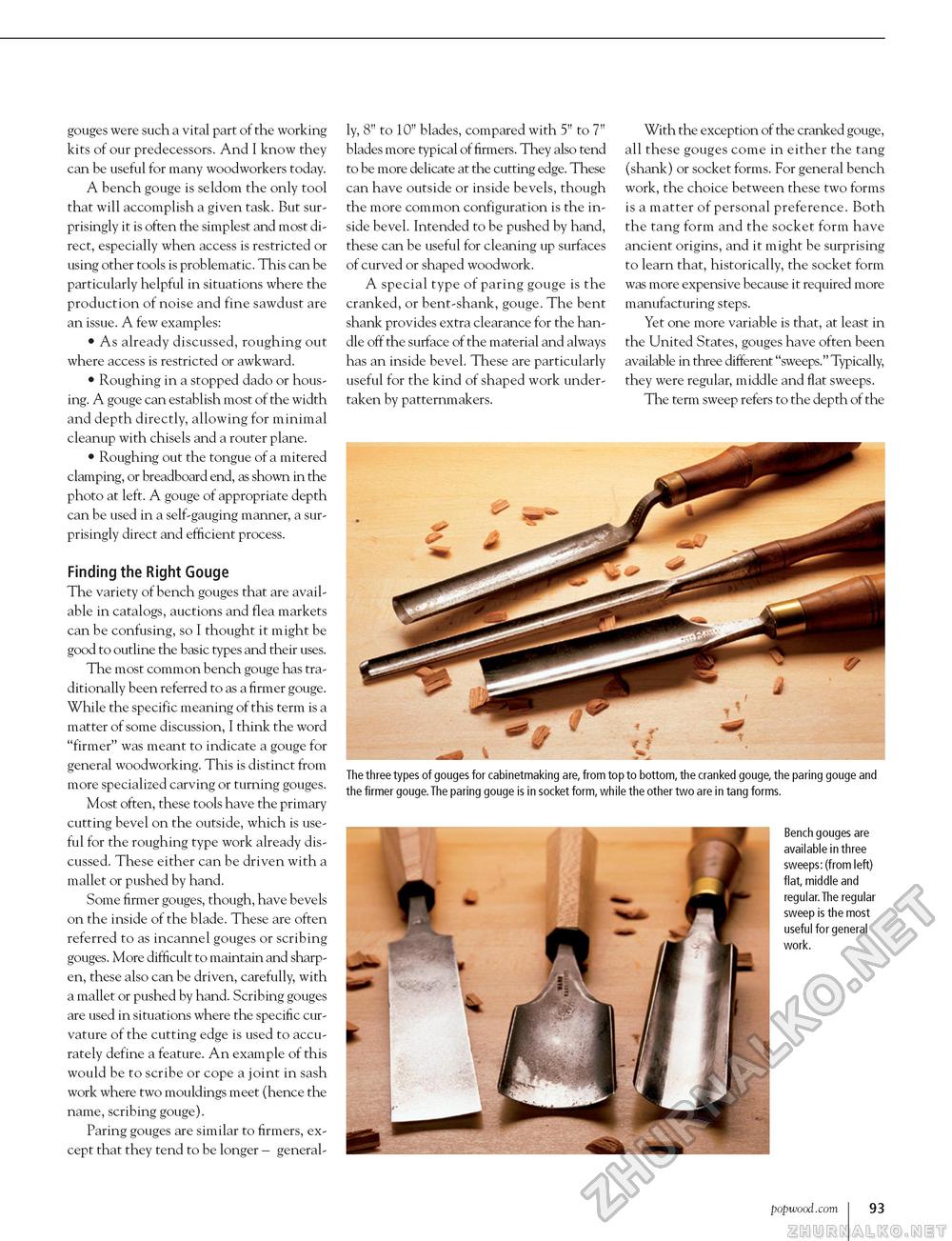Popular Woodworking 2003-10 № 136, страница 93
gouges were such a vital part of the working kits of our predecessors. And I know they can be useful for many woodworkers today. A bench gouge is seldom the only tool that will accomplish a given task. But surprisingly it is often the simplest and most direct, especially when access is restricted or using other tools is problematic. This can be particularly helpful in situations where the production of noise and fine sawdust are an issue. A few examples: • As already discussed, roughing out where access is restricted or awkward. • Roughing in a stopped dado or housing. A gouge can establish most of the width and depth directly, allowing for minimal cleanup with chisels and a router plane. • Roughing out the tongue of a mitered clamping, or breadboard end, as shown in the photo at left. A gouge of appropriate depth can be used in a self-gauging manner, a surprisingly direct and efficient process. Finding the Right Gouge The variety of bench gouges that are available in catalogs, auctions and flea markets can be confusing, so I thought it might be good to outline the basic types and their uses. The most common bench gouge has traditionally been referred to as a firmer gouge. While the specific meaning of this term is a matter of some discussion, I think the word "firmer" was meant to indicate a gouge for general woodworking. This is distinct from more specialized carving or turning gouges. Most often, these tools have the primary cutting bevel on the outside, which is useful for the roughing type work already discussed. These either can be driven with a mallet or pushed by hand. Some firmer gouges, though, have bevels on the inside of the blade. These are often referred to as incannel gouges or scribing gouges. More difficult to maintain and sharpen, these also can be driven, carefully, with a mallet or pushed by hand. Scribing gouges are used in situations where the specific curvature of the cutting edge is used to accurately define a feature. An example of this would be to scribe or cope a joint in sash work where two mouldings meet (hence the name, scribing gouge). Paring gouges are similar to firmers, except that they tend to be longer - general ly, 8" to 10" blades, compared with 5" to 7" blades more typical of firmers. They also tend to be more delicate at the cutting edge. These can have outside or inside bevels, though the more common configuration is the inside bevel. Intended to be pushed by hand, these can be useful for cleaning up surfaces of curved or shaped woodwork. A special type of paring gouge is the cranked, or bent-shank, gouge. The bent shank provides extra clearance for the handle off the surface of the material and always has an inside bevel. These are particularly useful for the kind of shaped work undertaken by patternmakers. With the exception of the cranked gouge, all these gouges come in either the tang (shank) or socket forms. For general bench work, the choice between these two forms is a matter of personal preference. Both the tang form and the socket form have ancient origins, and it might be surprising to learn that, historically, the socket form was more expensive because it required more manufacturing steps. Yet one more variable is that, at least in the United States, gouges have often been available in three different "sweeps." Typically, they were regular, middle and flat sweeps. The term sweep refers to the depth of the popwood.com 93 |








